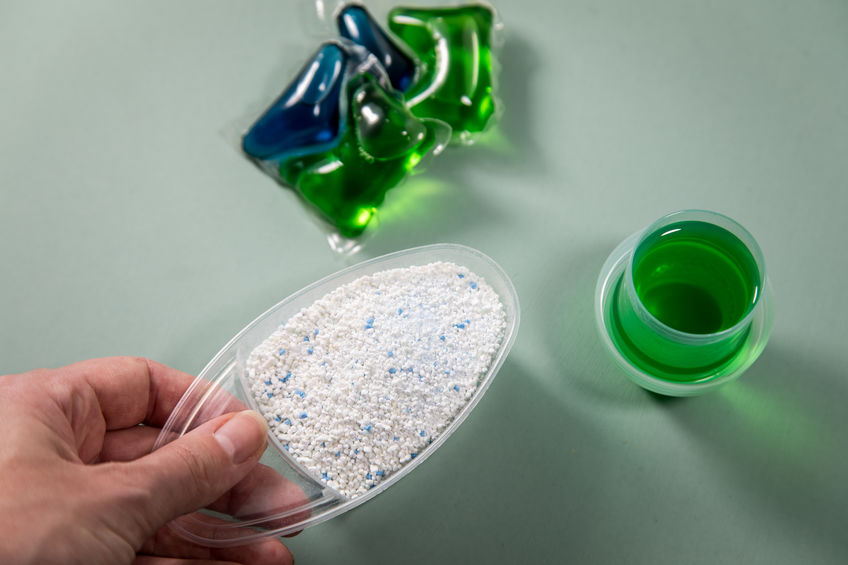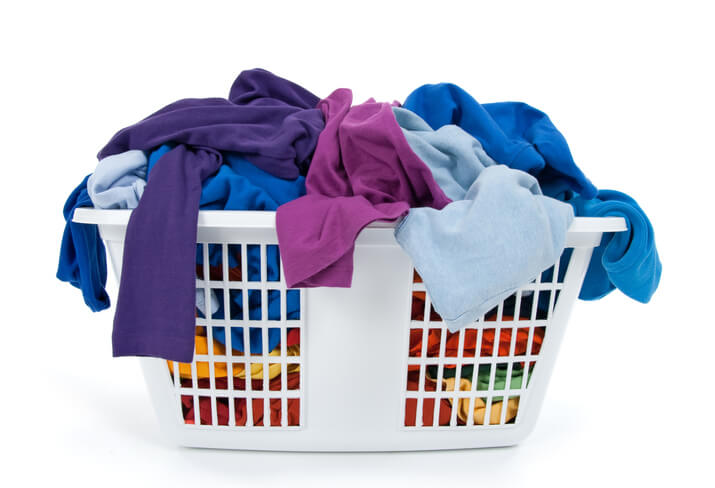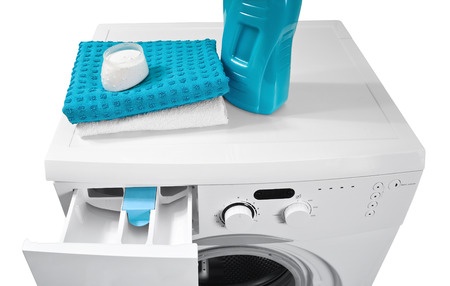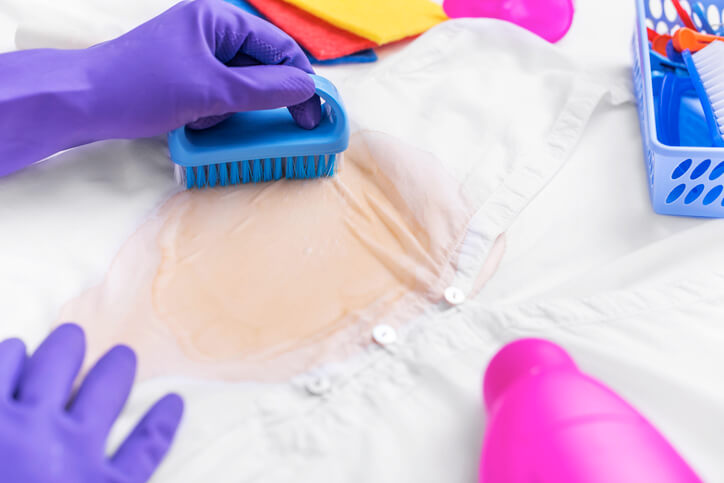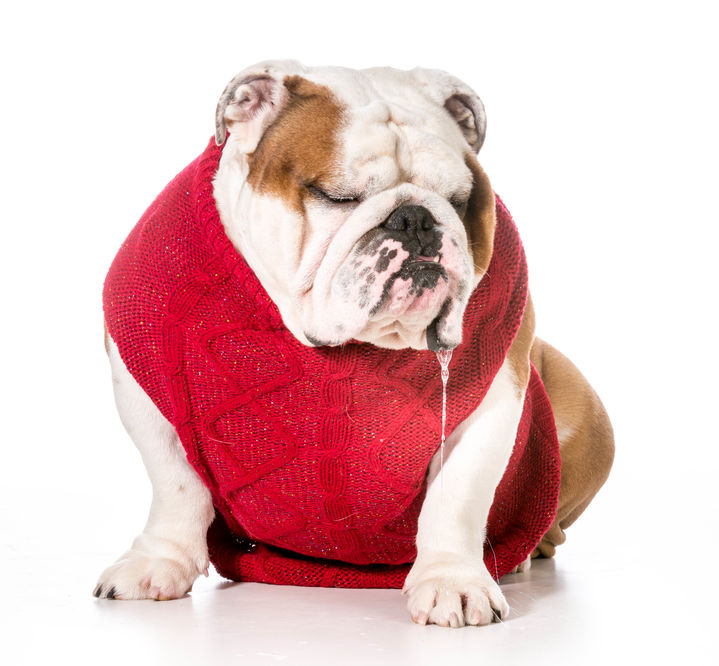Liquid or Powder Laundry Detergent?
Liquid or powder laundry detergent? Sometimes, it's hard to decide which is best for the dirty duds at hand.
Your everyday laundry detergent should be a tough all-fabric cleaner that works as well on grungy gardening duds as on collared polo shirts. How much detergent should you use?
Reading product labels is a good starting point. The optimal amount depends on the hardness of your water (the harder the water, the more detergent needed), how dirty the clothing is (more soil requires more detergent), and the wash water temperature (cooler water requires more detergent).
Here's the dirt on detergent to simplify your washdays.
How Laundry Detergent Works
Liquid or powder laundry detergent works by loosening dirt and gunk in fabrics. The removed soil is then held in the wash water until drained.
If you use too little detergent, clothes can become dull and dingy, white items may turn gray or yellowed, body soils are left on cuffs and collars, and lint isn't held in the water until it is rinsed away. Instead, it's redeposited on clothes.
When reading the product directions on how much to use, remember that because conditions differ from home to home and from load to load, package recommendations should be considered only as a starting point.
The hotter the water, the more effective the laundry detergent. When washing in cold water, you'll need to increase the amount of detergent to one-and-a-half to two times the recommended amount.
Or use a detergent created for cold water. This way, you won't use more of the product than needed to clean clothes.
If you notice greasy-looking stains and gunk building up on the washer's outer tub, you might be using too little detergent. When you see the ick, clean the washing machine and adjust your detergent amount for future loads.
Liquid or Powder Laundry Detergent?
Laundry detergent powders generally outperform liquids in industry testing. That said, each detergent formulation has its benefits and drawbacks. Here's a look at each:
Laundry liquids: All-purpose liquid detergents are effective on food, greasy, and oily stains. And because they are fluid, they can easily double as a spot and stain pre-treater. The biggest drawback of liquids is a tendency to use too much per load, which wastes money and can leave a residue on clothes.
Laundry powders: All-purpose laundry powders are ideal for general washday soils and stains and are usually less expensive per load. They forcefully lift out clay and ground-in dirt, making them ideal for children's play clothes. Powders can be problematic; however, they may not dissolve entirely if you have very cold water or only use cold water for washing.
Laundry pods: Single-load laundry detergent packets—called pods, pacs, or packs—are concentrated detergents in single-use enclosed packages.
However, they are expensive to use, and you may need two packs to clean really dirty clothes or extra-large loads. This is because individual packages are pre-measured for average soils in average-sized loads.
Ultra detergents: These come in smaller packages yet offer the same cleaning power as familiar products in larger containers. You need less of an ultra detergent than with an unconcentrated product.
Combination detergents: are one-stop-shopping products - one detergent that does two jobs. Look for liquid or powder detergents with built-in fabric softeners and powder detergents with color-safe bleach.
What To Know About Wash Day Helpers
Wash-Day Helpers
Prewash stain removers: Available in stick, liquid, aerosol, or pump-spray forms, these products go directly on a stain or spot to loosen the grime before washing.
Chlorine bleaches: These liquids boost laundry detergent while cleaning, whitening, sanitizing, and deodorizing laundry; safe on whites, colorfast cotton, linen, and washable synthetics.
Oxygen bleaches: These kinder, gentler bleaches are safe for most washable colored fabrics.
Bleach converts soils into colorless, soluble particles that are easily removed by detergents and carried away in the wash water. It can also brighten and whiten fabrics and help remove stubborn stains.
Household bleaches: Sodium hypochlorite bleaches (chlorine or liquid household bleach) are the more powerful laundry bleaches; they disinfect, clean, and whiten.
For best results, add 5 minutes after the wash cycle has begun to agitate to avoid destroying enzymes and fluorescent whiteners in the detergent.
Oxygen bleaches: Oxygen (color-safe bleaches) works best to maintain whiteness, not restore it. When using oxygen bleach, add it directly to the wash water before dumping in the clothes. Oxygen bleaches are most effective in warm-to-hot water.
Ready, Set, Wash
- Check clothing labels for care recommendations.
- Separate whites from colors to keep dyes from bleeding onto lighter-colored fabrics.
- Separate heavily soiled items from lightly soiled clothes so you can wash very dirty things separately.
- Adjust the recommended detergent amount (per label) if soil or water conditions are not average.
Good Detergent Can't Overcome Bad Laundry Practices
Even the best detergent can't compensate for corner-cutting on wash day. It's still important to separate light, dark, and dark clothes and white clothes, pre-treat stains before you wash, and take care not to overload your washing machine.
If the clothes can't move freely, there isn't a detergent anywhere to get them clean.
- Clean Home
- Laundry
- Liquid Or Powder Laundry Detergent
